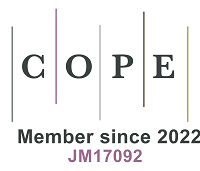REFERENCES
1. World Health Organization. Infant and young child feeding: model chapter for textbooks for medical students and allied health professionals. 2009.
2. Schecter A, Pavuk M, Päpke O, Ryan JJ, Birnbaum L, Rosen R. Polybrominated diphenyl ethers (PBDEs) in U.S. mothers’ milk. Environ Health Perspect 2003;111:1723-9.
4. Thomsen C, Stigum H, Frøshaug M, Broadwell SL, Becher G, Eggesbø M. Determinants of brominated flame retardants in breast milk from a large scale Norwegian study. Environ Int 2010;36:68-74.
5. Thompson LA, Darwish WS. Environmental chemical contaminants in food: review of a global problem. J Toxicol 2019;2019:2345283.
6. Fång J, Nyberg E, Winnberg U, Bignert A, Bergman Å. Spatial and temporal trends of the Stockholm Convention POPs in mothers’ milk - a global review. Environ Sci Pollut Res Int 2015;22:8989-9041.
7. Weber R, Bell L, Watson A, Petrlik J, Paun MC, Vijgen J. Assessment of pops contaminated sites and the need for stringent soil standards for food safety for the protection of human health. Environ Pollut 2019;249:703-15.
8. Toms LL, Sjödin A, Hobson P, Harden FA, Aylward LL, Mueller JF. Temporal trends in serum polybrominated diphenyl ether concentrations in the Australian population, 2002-13. Environ Int 2018;121:357-64.
9. Porta M, Gasull M, Puigdomènech E, et al. Distribution of blood concentrations of persistent organic pollutants in a representative sample of the population of Catalonia. Environ Int 2010;36:655-64.
10. Linderholm L, Biague A, Månsson F, Norrgren H, Bergman A, Jakobsson K. Human exposure to persistent organic pollutants in West Africa - a temporal trend study from Guinea-Bissau. Environ Int 2010;36:675-82.
11. Orta-García S, Pérez-Vázquez F, González-Vega C, Varela-Silva JA, Hernández-González L, Pérez-Maldonado I. Concentrations of persistent organic pollutants (POPs) in human blood samples from Mexico City, Mexico. Sci Total Environ 2014;472:496-501.
12. Rogan WJ, Gladen BC, McKinney JD, et al. Polychlorinated biphenyls (PCBs) and dichlorodiphenyl dichloroethene (DDE) in human milk: effects of maternal factors and previous lactation. Am J Public Health 1986;76:172-7.
13. United Nations Environment Programme. Results of the 2016-2019 WHO/UNEP human milk survey on persistent organic pollutants. 2023. Available from: https://www.unep.org/resources/report/results-2016-2019-human-milk-survey-persistent-organic-pollutants. [Last accessed on 14 Nov 2024].
14. Malisch R, Malisch K, van Leeuwen FXR, et al. Overview of WHO- and UNEP-coordinated human milk studies and their link to the stockholm convention on persistent organic pollutants. In: Malisch R, Fürst P, Šebková K, editors. Persistent organic pollutants in human milk. Springer, Cham. 2023. pp. 29-61.
15. Colles A, Koppen G, Hanot V, et al. Fourth WHO-coordinated survey of human milk for persistent organic pollutants (POPs): Belgian results. Chemosphere 2008;73:907-14.
16. Aerts R, Van Overmeire I, Colles A, et al. Determinants of persistent organic pollutant (POP) concentrations in human breast milk of a cross-sectional sample of primiparous mothers in Belgium. Environ Int 2019;131:104979.
17. Serreau R, Terbeche Y, Rigourd V. Pollutants in breast milk: a scoping review of the most recent data in 2024. Healthcare 2024;12:680.
18. WHO. Fourth WHO-coordinated survey of human milk for persistent organic pollutants in cooperation with UNEP. Guidelines for developing a National Protocol. 2007. Available from: https://www.tuttosteopatia.it/wp-content/uploads/popprotocol.pdf.
19. CEN Communities. EN 1528-2:1996. Fatty food - Determination of pesticides and polychlorinated biphenyls (PCBs) - Part 2: Extraction of fat, pesticides and PCBs, and determination of fat content. Available from: https://standards.iteh.ai/catalog/standards/cen/95efb1b4-2d48-4777-b32a-9b98a28ce415/en-1528-2-1996?srsltid=AfmBOoo13BtPo4iT8KlFXk5r9zX6KLhyVpp3UA4gJxeYyv7ILZ_XfJEs. [Last accessed on 14 Nov 2024].
20. Dimitriadou L, Malarvannan G, Covaci A, et al. Levels and profiles of brominated and chlorinated contaminants in human breast milk from Thessaloniki, Greece. Sci Total Environ 2016;539:350-8.
21. Malarvannan G, Dirinck E, Dirtu AC, et al. Distribution of persistent organic pollutants in two different fat compartments from obese individuals. Environ Int 2013;55:33-42.
22. Malisch R, Schächtele A. Analysis and quality control of WHO- and UNEP-coordinated human milk studies 2000-2019: polychlorinated biphenyls, polychlorinated dibenzo-p-dioxins, and polychlorinated dibenzofurans. In: Malisch R, Fürst P, Šebková K, editors. Persistent organic pollutants in human milk. Springer, Cham. 2023. pp. 77-108.
23. Hardebusch B, Polley J, Dambacher B, Kypke K, Lippold R. Analysis and quality control of WHO- and UNEP-coordinated human milk studies 2000-2019: organochlorine pesticides and industrial contaminants. In: Malisch R, Fürst P, Šebková K, editors. Persistent organic pollutants in human milk. Springer, Cham. 2023. pp. 109-44.
24. Schächtele A, Hardebusch B, Krätschmer K, Tschiggfrei K, Zwickel T, Malisch R. Analysis and quality control of WHO- and UNEP-coordinated human milk studies 2000-2019: polybrominated diphenyl ethers, hexabromocyclododecanes, chlorinated paraffins and polychlorinated naphthalenes. In: Malisch R, Fürst P, Šebková K, editors. Persistent organic pollutants in human milk. Springer, Cham. 2023. pp. 145-83.
25. Panel on Dietetic Products, Nutrition and Allergies (NDA). Scientific Opinion on nutrient requirements and dietary intakes of infants and young children in the European Union. EFSA J 2013;11:3408.
26. Hardy A, Benford D, Halldorsson T, et al; EFSA Scientific Committee. Guidance on the risk assessment of substances present in food intended for infants below 16 weeks of age. EFSA J 2017;15:e04849.
27. Panel on Contaminants in the Food Chain (CONTAM). Scientific Opinion on polybrominated diphenyl ethers (PBDEs) in food. EFSA J 2011;9:2156.
28. EFSA Panel on Contaminants in the Food Chain (CONTAM); Schrenk D, Bignami M, Bodin L, et al. Update of the risk assessment of polybrominated diphenyl ethers (PBDEs) in food. EFSA J 2024;22:e8497.
29. Panel on Contaminants in the Food Chain (CONTAM). Scientific Opinion on Hexabromocyclododecanes (HBCDDs) in Food. EFSA J 2011;9:2296.
30. EFSA Panel on Contaminants in the Food Chain (CONTAM); Schrenk D, Bignami M, Bodin L, et al. Update of the risk assessment of hexabromocyclododecanes (HBCDDs) in food. EFSA J 2021;19:e06421.
31. Schuhmacher M, Kiviranta H, Vartiainen T, Domingo JL. Concentrations of polychlorinated biphenyls (PCBs) and polybrominated diphenyl ethers (PBDEs) in milk of women from Catalonia, Spain. Chemosphere 2007;67:S295-300.
32. Ingelido AM, Ballard T, Dellatte E, et al. Polychlorinated biphenyls (PCBs) and polybrominated diphenyl ethers (PBDEs) in milk from Italian women living in Rome and Venice. Chemosphere 2007;67:S301-6.
33. Lacorte S, Ikonomou MG. Occurrence and congener specific profiles of polybrominated diphenyl ethers and their hydroxylated and methoxylated derivatives in breast milk from Catalonia. Chemosphere 2009;74:412-20.
34. Croes K, Colles A, Koppen G, et al. Persistent organic pollutants (POPs) in human milk: a biomonitoring study in rural areas of Flanders (Belgium). Chemosphere 2012;89:988-94.
35. Antignac JP, Main KM, Virtanen HE, et al. Country-specific chemical signatures of persistent organic pollutants (POPs) in breast milk of French, Danish and Finnish women. Environ Pollut 2016;218:728-38.
36. Čechová E, Scheringer M, Seifertová M, et al. Developmental neurotoxicants in human milk: comparison of levels and intakes in three European countries. Sci Total Environ 2017;579:637-45.
37. Klinčić D, Herceg Romanić S, Matek Sarić M, Grzunov J, Dukić B. Polychlorinated biphenyls and organochlorine pesticides in human milk samples from two regions in Croatia. Environ Toxicol Pharmacol 2014;37:543-52.
38. Klinčić D, Herceg Romanić S, Brčić Karačonji I, Matek Sarić M, Grzunov Letinić J, Brajenović N. Organochlorine pesticides and PCBs (including dl-PCBs) in human milk samples collected from multiparae from Croatia and comparison with primiparae. Environ Toxicol Pharmacol 2016;45:74-9.
39. Çok I, Mazmanci B, Mazmanci MA, Turgut C, Henkelmann B, Schramm KW. Analysis of human milk to assess exposure to PAHs, PCBs and organochlorine pesticides in the vicinity Mediterranean city Mersin, Turkey. Environ Int 2012;40:63-9.
40. Wasser J, Berman T, Lerner-Geva L, Grotto I, Rubin L. Biological monitoring of persistent organic pollutants in human milk in Israel. Chemosphere 2015;137:185-91.
41. Iszatt N, Janssen S, Lenters V, et al. Environmental toxicants in breast milk of Norwegian mothers and gut bacteria composition and metabolites in their infants at 1 month. Microbiome 2019;7:34.
42. Hassine SB, Ameur WB, Gandoura N, Driss MR. Determination of chlorinated pesticides, polychlorinated biphenyls, and polybrominated diphenyl ethers in human milk from Bizerte (Tunisia) in 2010. Chemosphere 2012;89:369-77.
43. Zhou P, Wu Y, Yin S, et al. National survey of the levels of persistent organochlorine pesticides in the breast milk of mothers in China. Environ Pollut 2011;159:524-31.
44. Bramwell L, Fernandes A, Rose M, Harrad S, Pless-Mulloli T. PBDEs and PBBs in human serum and breast milk from cohabiting UK couples. Chemosphere 2014;116:67-74.
45. Abdallah MA, Harrad S. Polybrominated diphenyl ethers in UK human milk: implications for infant exposure and relationship to external exposure. Environ Int 2014;63:130-6.
46. Hoopmann M, Albrecht UV, Gierden E, Huppmann R, Suchenwirth R. Time trends and individual characteristics associated with polybrominated diphenyl ethers in breast milk samples 2006-2009 in Lower Saxony, Germany. Int J Hyg Environ Health 2012;215:352-9.
47. Roosens L, D’Hollander W, Bervoets L, et al. Brominated flame retardants and perfluorinated chemicals, two groups of persistent contaminants in Belgian human blood and milk. Environ Pollut 2010;158:2546-52.
48. Szabo DT, Diliberto JJ, Huwe JK, Birnbaum LS. Differences in tissue distribution of HBCD alpha and gamma between adult and developing mice. Toxicol Sci 2011;123:256-63.
49. Poma G, Malysheva SV, Goscinny S, et al. Occurrence of selected halogenated flame retardants in Belgian foodstuff. Chemosphere 2018;194:256-65.
50. Goscinny S, Vandevijvere S, Maleki M, et al. Dietary intake of hexabromocyclododecane diastereoisomers (α-, β-, and γ-HBCD) in the Belgian adult population. Chemosphere 2011;84:279-88.
51. Hond E, Govarts E, Bruckers L, Schoeters G. Determinants of polychlorinated aromatic hydrocarbons in serum in three age classes - Methodological implications for human biomonitoring. Environ Res 2009;109:495-502.
52. Overmeire I, Pussemier L, Hanot V, De Temmerman L, Hoenig M, Goeyens L. Chemical contamination of free-range eggs from Belgium. Food Addit Contam 2006;23:1109-22.
53. Van Overmeire I, Pussemier L, Waegeneers N, et al. Assessment of the chemical contamination in home-produced eggs in Belgium: general overview of the CONTEGG study. Sci Total Environ 2009;407:4403-10.
54. Windal I, Hanot V, Marchi J, et al. PCB and organochlorine pesticides in home-produced eggs in Belgium. Sci Total Environ 2009;407:4430-7.
55. Reynders H, Colles A, Morrens B, et al. The added value of a surveillance human biomonitoring program: the case of FLEHS in Flanders (Belgium). Int J Hyg Environ Health 2017;220:46-54.
56. van den Berg M, Kypke K, Kotz A, et al. WHO/UNEP global surveys of PCDDs, PCDFs, PCBs and DDTs in human milk and benefit-risk evaluation of breastfeeding. Arch Toxicol 2017;91:83-96.
57. Malisch R, Kotz A. Dioxins and PCBs in feed and food - review from European perspective. Sci Total Environ 2014;491-2:2-10.
58. Cariou R, Veyrand B, Yamada A, et al. Perfluoroalkyl acid (PFAA) levels and profiles in breast milk, maternal and cord serum of French women and their newborns. Environ Int 2015;84:71-81.
59. Motas Guzmàn M, Clementini C, Pérez-Cárceles MD, et al. Perfluorinated carboxylic acids in human breast milk from Spain and estimation of infant’s daily intake. Sci Total Environ 2016;544:595-600.
60. Lankova D, Lacina O, Pulkrabova J, Hajslova J. The determination of perfluoroalkyl substances, brominated flame retardants and their metabolites in human breast milk and infant formula. Talanta 2013;117:318-25.
61. FAO/WHO. Pesticide residues in food 2000: DDT. Part II - Toxicology studies. Available from: https://www.inchem.org/documents/jmpr/jmpmono/v00pr03.htm. [Last accessed on 14 Nov 2024].
62. Environmental Health Criteria 195. Hexachlorobenzene. 1997. Available from: http://www.inchem.org/documents/ehc/ehc/ehc195.htm. [Last accessed on 14 Nov 2024].
63. Food Safety Authority (EFSA). Opinion of the scientific panel on contaminants in the food chain [CONTAM] related to hexachlorobenzene as undesirable substance in animal feed. EFSA J 2006;4:402.
64. Pesticide residues in food - 2002 - Joint FAO/WHO Meeting on Pesticide Residues. Available from: http://www.inchem.org/documents/jmpr/jmpmono/2002pr08.htm. [Last accessed on 14 Nov 2024].
65. Concise International Chemical Assessment Document 70. Heptachlor. 2006. Available from: http://www.inchem.org/documents/cicads/cicads/cicad70.htm. [Last accessed on 14 Nov 2024].
66. EFSA Panel on Contaminants in the Food Chain (EFSA CONTAM Panel); Schrenk D, Bignami M, Bodin L, et al. Risk to human health related to the presence of perfluoroalkyl substances in food. EFSA J 2020;18:e06223.







